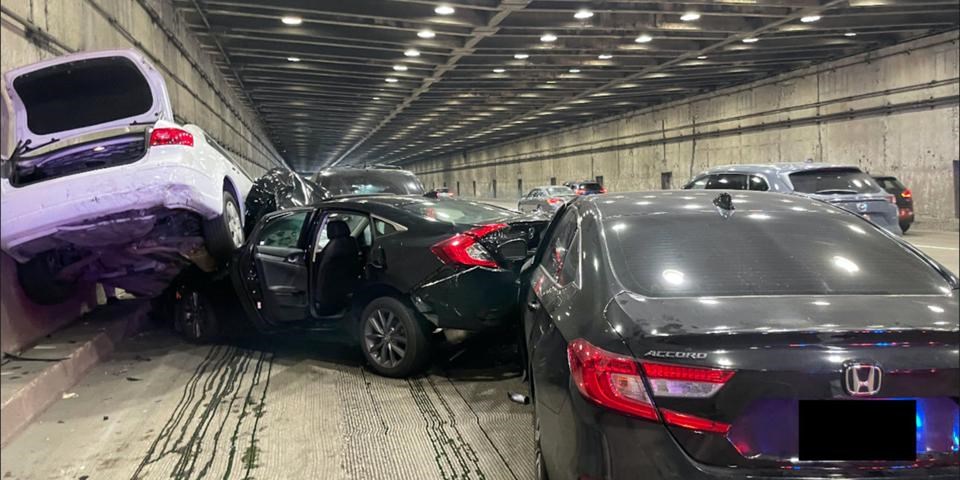Four years ago, I sat in on a riveting Lower Mainland Local Government Association (LMLGA) presentation—an oxymoron, I know—that has stuck with me ever since.
In it, Don Lidstone, a Vancouver lawyer specializing in local government law, broke down the implications of autonomous vehicles—implications, he posited, that nobody was really paying attention to.
“It will be more transformative than the internet or internal combustion during the next 10 years, and during the next election term of four years, you’ll have to deal with it in terms of staffing, finance, infrastructure, IT systems, risk management and viability and bylaws. A lot of big issues there,” Lidstone said.
“2022 is your next election … and nobody is doing anything about the fact that there are going to be so many of these driverless cars.”
This massive shift in transportation would require municipalities to completely rethink their approach to planning, Lidstone reasoned.
“Right now, if you have engineering and planning, you’re dealing with signage, you’re dealing with curbs and lanes and signals, traffic intersections, parking. That’s all going to change, because none of that is going to be relevant anymore,” he said.
“These cars operate by lidar and radar and cameras ... so the cars talk to each other, but they also have to talk to your infrastructure.”
That was May 2018, and the election Lidstone referenced has now come and gone—with nary a peep of the implications of autonomous vehicles.
So the technological revolution has been slower than advertised.
The topic of autonomous vehicles was once again broached locally at a Whistler Learning Centre panel discussion in September 2020.
At that event, real-estate economist and University of Alberta professor David Dale-Johnson noted the Society of Automotive Engineers has developed a ranking system for vehicle automation, weighted on a scale of zero to five—zero being no automation, five being full, with four constituting a “very high” level of automation that still allows the user to step in, if necessary.
The roadblock to full automation is uniquely philosophical, in a way, Dale-Johnson said.
“The issue is, if you’re following a vehicle and all of a sudden a mattress falls off the roof of the vehicle right in front of you, is the car smart enough—does it have enough intellectual capacity—to know what it’s supposed to do?” he said.
Some researchers don’t think we’ll ever achieve Level 5 automation, Dale-Johnson said.
Either way, it would appear self-driving cars have a long way to go before they’re transforming our everyday lives.
On Nov. 24, a 2021 Tesla Model S equipped with a prototype “full self-driving” mode caused an eight-car pileup on San Francisco’s Oakland Bay Bridge.
According to a detailed breakdown of the crash by Forbes, that incident was likely at least partially caused by human error. But the article notes that “phantom braking” while in autopilot mode has been a complaint among Tesla owners for some time.
So again—the technological revolution isn’t exactly happening overnight.
But Whistler would be wise to start taking it more seriously, on all fronts.
True to Lidstone’s assertions, there is no evidence that the Resort Municipality of Whistler (RMOW)—or any local governments in B.C., really—are taking serious steps to prepare for the rise of autonomous vehicles.
In fact, the words “autonomous” and “driverless” are both completely absent from Whistler’s recently adopted, 387-page Official Community Plan.
Taking it a step further, “automation” is also missing, despite the fact that workforce automation will no doubt play a key role in the resort’s future.
The word “technology” does appear 13 times over the 387 pages, and often in reference to things like transportation and motor vehicles, so the plot isn’t completely lost.
The RMOW also has a Technology Advisory Committee… but like most municipal committees, the majority of its meetings are closed to the public, so we can’t really know how seriously they’re discussing things like driverless cars or the implications of automation.
At any rate, history shows us that the future of technology and its practical implications can be a difficult topic to discuss with any degree of certainty.
My mother used to tell us stories about how, when she was a kid, the prevailing belief was that, by the year 2000, everyone would have their own personal jetpack.
Twenty-three years past that promised delivery date, my mom is still bitter she does not yet have her own jetpack.
It’s the same vibe given off by those retro, old-timey magazines with their hypothetical views of the future—always so laughably wrong and optimistic when viewed in hindsight from the hypothesized year in question.
I suppose it speaks to our idealized view of technology and how it will progress—somehow always along a straight, progressive line towards a sleek, helpful, stress-free future; never how it actually plays out, which is often two steps forward, one step back, followed by a step or two to either side.
So how will technology, Artificial Intelligence and workforce automation impact Whistler as a tourist resort?
It’s safe to say that, in the long run, automation will prove a net positive. It’s also a safe bet that we’re in for some collective hardship as we muddle our way towards a truly post-work society.
When it comes to the hard specifics, only time will tell—but preparing for the future, whatever it might hold, is in Whistler’s best interests.




